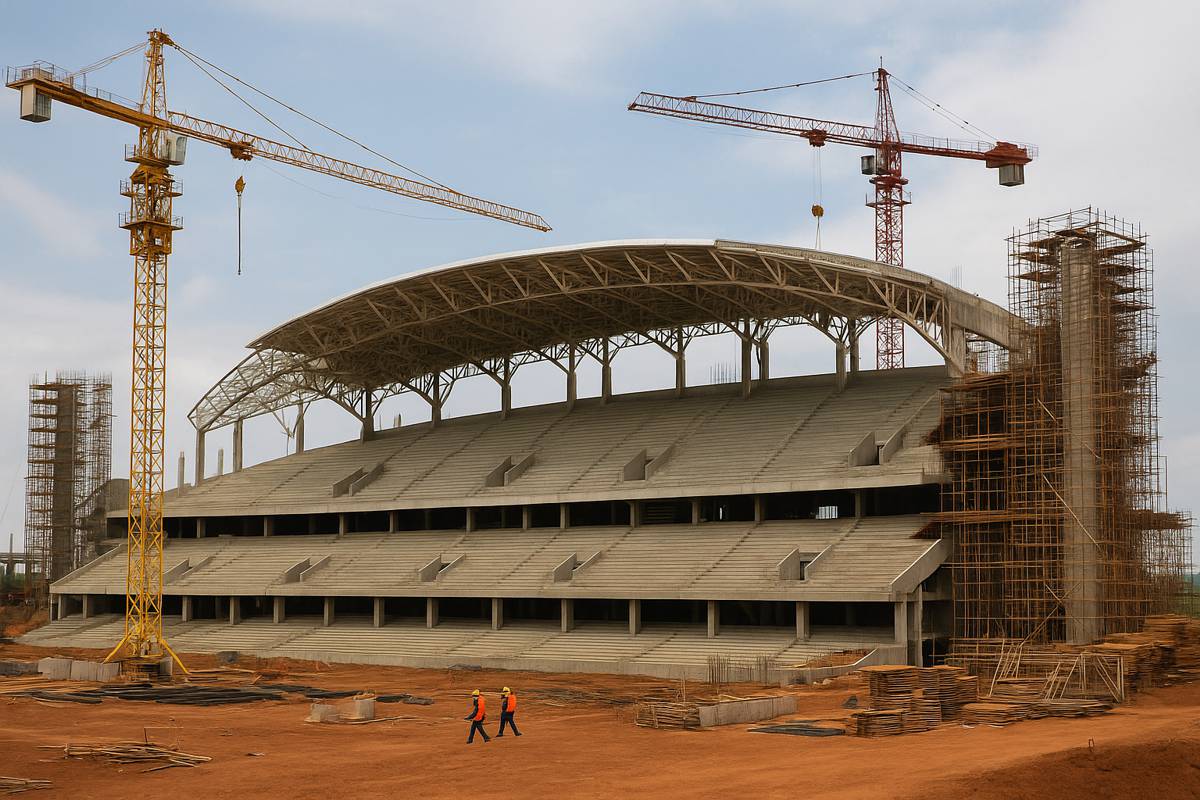A commitment to fix the system – the government’s response to the Grenfell Tower Report
Following on from the tragedy of the Grenfell Tower fire on 14 June 2017, where the fire breached compartmentation of the block resulting in the loss of 72 lives and many more being made homeless, the government commissioned an independent review of the building regulations and fire safety to be led by Dame Judith Hackitt, an engineer and civil servant. On 18 December 2017 Dame Hackitt published the initial part of her Grenfell Tower Report, the interim report in which she diagnosed issues with the current building safety regulatory framework and concluded that it was “not fit for purpose”.
Subsequently, in May 2018, she published her final report which set out 53 recommendations to the government in order to address the deficiencies in the current regulatory regime. Dame Hackitt’s recommendations are wide in scope and cover everything from the planning phase of a higher risk residential building which is 10 storeys or more in height (and in some cases other buildings too) right through to BIM and building materials.
The government’s implementation plan
On 18 December 2018 the government published its long awaited ‘Building a safer future – an implementation plan‘ (the Plan), the government’s formal response to the recommendations set out in Dame Hackitt’s Independent Review of the Building Regulations and Fire Safety (May 2018) (the Review). The general response is that the government agrees in principle with the majority of the recommendations put forward by Dame Hackitt and will consult on the specific details in Spring 2019. The government has also confirmed that it “has not hesitated” to go beyond the scope of the Review where deemed appropriate and this is shown by the government’s recent ban of combustible cladding material from the external walls of new high-rise homes over 18 metres, which the Review did not include. The government’s response is not surprising given the enormous political pressure to ensure that the tragic loss of lives caused by the Grenfell Tower fire is not repeated.
This article summarises the government’s response to the recommendations set out in chapters 1 (Parameters and principles of a new regulatory framework) and 2 (Design, construction and refurbishment) of the Review as they represent the recommendations most relevant to organisations active in the design, construction and refurbishment of higher risk residential buildings which are 10 storeys or more in height (HRRBs). Affected parties should also be conscious of the government’s response to the recommendations set out in chapters 5 (Competence), 6 (Guidance and monitoring to support building safety), 7 (Products) and 8 (Golden thread of building information) of the Review as they are also relevant to the industry. The Plan includes a useful consolidation of the government’s response to each recommendation at Annex A, which is available for further reading here.
The government’s response to chapters 1 and 2 of the Review
Womble Bond Dickinson have set out their recommendations made in chapters 1 and 2 of the Review, the government’s responses and their commentary in the table below. Some of the key recommendations include a new regulator for HRRBs, the JCA, as well as a new JCA Gateway approval process for HRRBs whereby developers will be required to obtain JCA clearance during three phases of development: the planning stage, before construction works commence and before occupation commences. In addition, Dame Hackitt also recommends a new change control process whereby variations during the construction phase of an HRRB will require prior approval by the JCA.
What does this mean for the industry?
There is no doubt that, if implemented in full, Dame Hackitt’s recommendations represent fundamental regulatory reform in the manner in which HRRBs are regulated in England and Wales.
Whilst the construction industry welcomes the concept of safer homes, it will have to prepare itself to comply with any new regulatory regime and to take on board that the new regulatory regime may well result in additional cost, disruption and administration, particularly during the teething stage of the new regime. Developers and funders should also be conscious that the Review suggests extending aspects of the new proposed regulatory regime, such as items (10) and (13) in the table, to cover MORBs which will result in even wider ramifications for the industry.
For now, the government has merely indicated its agreement in principle to some of the recommendations at this stage. The full extent and form of its implementation will be unclear until the consultation phase in the Spring. It is however interesting that the government has not indicated its unequivocal support for all of the recommendations made in chapters 1 and 2 of the Review.
Only time will tell the precise extent of implementation by the government but, in the meantime, affected parties should continue to monitor developments and fully participate in the consultation process in order to shape the government’s decisions.
| Recommendation | The Government’s response | WBD commentary |
| 1. Buildings affected: the new regulatory regime should apply to new and existing residential properties which are 10 or more storeys high in the first instance | The government recognises the need to ensure that higher risk residential buildings of 10 storeys or more (HRRBs) are included from the outset.
A consultation is expected in Spring 2019. |
If adopted in full, this is likely to affect parties which own, develop, design, build, refurbish, approve and manage HRRBs. For instance, where a new development comprises of HRRBs and non-HRRBs, the developer will be required to comply with separate regulatory regimes for each. This may lead to additional disruption and cost to the programme and budget.
Please note that the Review suggests applying the regime more broadly in the future in order to include multi-occupancy residential buildings (MORBs) and institutional residential buildings such as boarding schools, hospitals, care homes and student accommodation. |
| 2. A new regulator: the government should set up a new regulator for HRRBs – the Joint Competent Authority (JCA) – comprising of the Health & Safety Executive (HSE), Fire and Rescue Authorities and the local authority building control. | The government strongly supports the concept of a joined-up approach by the HSE, Fire and Rescue Authorities and the local authority building control.
It is establishing a new Joint Regulators Group to develop and test this recommendation. A consultation is expected in Spring 2019. |
If adopted in full, this is likely to affect parties which own, fund, develop, design, build, refurbish, approve and manage HRRBs. For instance, where a new development comprises of HRRBs and non-HRRBs, the developer will be required to interact with different regulators: the JCA for the HRRBs and others for the non-HRRBs. |
| 3. An holistic approach to building safety which treats the building as a single entity and a new over-arching Approved Document should be published describing the system and the holistic analyses that must be completed when undertaking building work. | The government agrees with the recommendation in principle.
It has committed to carrying out full technical reviews of: • Approved Document B (the statutory Building Regulations fire safety guidance); • Approved Document L (Conservation of fuel and power); • Approved Document F (Ventilation); and • Approved Document M (Access to and use of buildings). The expert group set up by the Ministry of Housing, Communities and Local Government has also recommended reinstating the Building Regulations manual to explain the role of Approved Documents and their relationship with each other. A consultation is expected in Spring 2019. |
This is likely to affect parties which develop, design, build, refurbish, approve and manage HRRBs as the guidance contained in the Approved Document suite explains how the requirements of the Building Regulations 2010 may be satisfied and are taken into account when building work is assessed by building control. |
| 4. A new mandatory reporting system to the JCA should be set up for HRRBs. Key dutyholders should report any corner cutting practices within their organisations and non-reporting should be regarded as non-compliance and sanctions applied appropriately.
The JCA should be a prescribed person under the Public Interest Disclosure Act 1998. |
The government agrees with this recommendation in principle.
A consultation is expected in Spring 2019. |
Key dutyholders are generally those identified in the Construction (Design & Management) Regulations 2015 (CDM Regulations), namely the Client, Principal Designer, the Principal Contractor and owner (during the occupation stage). Affected parties should be conscious of the consequences of non-reporting and that the outputs of these mandatory reports (and statistical analysis of this data) would be made publicly available. |
| 5. New building safety dutyholders: the government should specify the key roles that will ensure that the procurement, design and construction process results in HRRBs that are safe. These should be, as a minimum, those identified under the CDM Regulations. | The government agrees with this recommendation in principle.
A consultation is expected in Spring 2019. |
This is likely to affect parties which own, develop, design, build and refurbish HRRBs and their insurers.
Insurers underwriting construction risks should monitor this recommendation as an extension in the Client, Principal Designer and Principal Contractor role is likely to have an impact on the nature of claims made in future. For developers this extension is likely to lead to additional cost as dutyholders begin to price for this risk. |
| 6. A new JCA Gateway Point during the Planning Application stage (Point 1) of an HRRB: the Local Planning Authority should be required in law to undertake a consultation with the JCA where it identifies that a building is an HRRB. This process should also apply where planning permission for another building in the vicinity of an HRRB is sought. | The government agrees with this recommendation in principle.
A consultation is expected in Spring 2019. |
This is likely to affect parties which fund, develop, design, build and refurbish HRRBs and their insurers.
For developers and funders, the new JCA gateway approval point may lead to additional disruption and cost as JCA interaction may delay the programme and designers may begin to price for the additional support required. Developers and funders must also ensure that future contracts adequately capture the risk of delay and cost caused by JCA interaction. |
| 7. A new JCA Gateway Point for Full Plans Approval (Point 2) of an HRRB: the JCA should carry out a thorough assessment of detailed design plans for HRRBs in order to give permission for building work to legally commence. This should be in line with paragraphs 2.29-2.32 of the Review, ‘Full Plans Approval’. | The government agrees with this recommendation in principle.
A consultation is expected in Spring 2019. |
This is likely to affect parties which fund, develop and design HRRBs. For developers and funders, the new JCA gateway approval point may lead to additional disruption and cost as JCA interaction may delay the programme and designers may begin to price for JCA verification support. Developers and their funders must also ensure that future contracts adequately provide for the risk of delay and cost caused by JCA interaction. |
| 8. A new JCA Gateway Point for the Completion Certificate (Point 3) of an HRRB: the JCA should undertake a thorough test of the as-built construction of HRRBs prior to the occupation stage, supported by documentary evidence from the Principal Contractor.
This should be as set out in paragraphs 2.33-2.35 of the Review. |
The government agrees with this recommendation in principle.
A consultation is expected in Spring 2019. |
This is likely to affect parties which fund, develop, build, approve and manage HRRBs.
For developers and funders, the new JCA gateway approval point may lead to additional disruption and cost as JCA interaction may delay the programme and contractors may begin to price for JCA verification support. Developers and funders should ensure that future contracts adequately provide for the risk of delay to occupation caused by JCA interaction. |
| 9. Multi-occupancy residential buildings and institutional buildings: the government should consider extending Gateway Points 1-3 to cover MORBs. | A consultation is expected in Spring 2019. | If adopted in full, the JCA Gateway approval process will apply to the development of new MORBs such as boarding schools, hospitals, care homes, hotels and student accommodation. |
| 10. A new change control process which obliges dutyholders to notify the JCA of significant changes post Gateway Point 2.
‘Major’ changes would require prior approval from the JCA before execution and ‘Minor’ changes would need to be recorded to demonstrate that Building Regulations are still satisfied. |
A consultation is expected in Spring 2019. | If adopted in full, this is likely to affect parties which fund, develop, design, build, refurbish, approve and manage HRRBs. For developers and funders this may cause additional disruption and cost to works. |
| 11. Withdrawal of the Competent Person Scheme in relation to HRRBs: building work carried out by ‘persons in a competent person’s scheme’ should also be subject to full oversight by the JCA in line with paragraph 2.38-2.39 of the Review. | A consultation is expected in Spring 2019. | This is likely to affect parties which develop, build, refurbish, approve and manage HRRBs. There are around 20 types of building works, such as bathroom installation works, which when done by ‘competent persons’ can be self-certified.
If this recommendation is adopted in full, competent persons will no longer be able to self-certify for relevant works carried out on HRRBs. For developers and property managers this may cause additional disruption and cost to works. |
| 12. A restriction to Approved Inspectors’ (AIs) scope of duties in relation to HRRBs: a separation of the statutory duties from the consultancy duties. AIs should no longer be permitted to carry out statutory building control services and consultancy services in relation to the same building work. | The government has confirmed it will continue to make use of the expertise amongst both local authority and private sector building control inspectors and it is minded to ensure that AIs can be contracted to provide building control services through the new regulatory framework.
A consultation is expected in Spring 2019. |
If adopted in full, this is likely to affect parties which develop, design, build, and approve HRRBs. For developers, they will need to allow sufficient time for building control verification since the party verifying the building work will no longer be an integrated part of its team. This may cause additional disruption and cost. |
| 13. Fire and rescue authorities should be engaged more consistently in the safety of HRRBs including the JCA Gateway Points in line with paragraph 2.46 of the Review. | A consultation is expected in Spring 2019. | If adopted in full, this is likely to affect parties which develop, design, build, refurbish and manage HRRBs. The fire and rescue authorities will have the explicit ability to delay JCA clearance at any Gateway Point. This is likely to result in additional disruption and cost to works. |
| 14. A new sanctions and enforcement regime should be introduced in relation to HRRBs to deter non-compliance. The enforcement tools should replicate and align with the approach in the Health and Safety at Work Act 1974 including:
• statutory Improvement and Prohibition Notices; and • an increase to the time limits for bringing prosecutions against dutyholders (to five or six years post practical completion) for ‘major’ deficiencies. The new powers should be available to support either the JCA or Local Authority Building Standards. |
A consultation is expected in Spring 2019. | If adopted in full, this is likely to affect parties which own and develop HRRBs.
Affected parties should ensure they fully understand and comply with their dutyholder obligations in order to avoid fines and potential criminal prosecution. |
| 15. New requirement for safety case reviews where an HRRB has not yet had its first safety case review and seeks to carry out refurbishment work set out in paragraphs 2.58-2.59 of the Review. | The government accepts this recommendation in principle.
A consultation is expected in Spring 2019. |
This is likely to affect parties which own, manage and refurbish HRRBs. For owners and developers, they should allow sufficient time and resources for JCA interaction during the safety case review. |





















